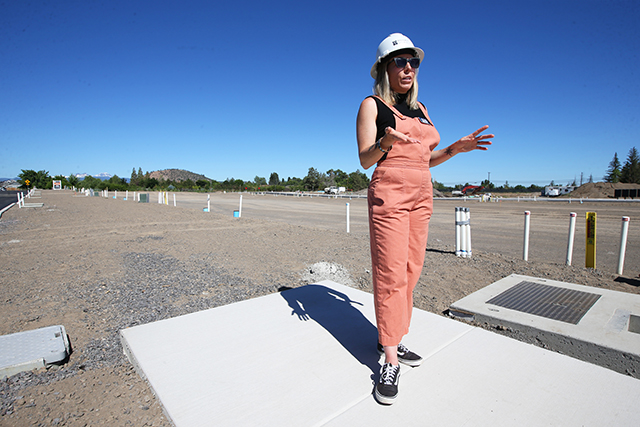Chinese education has lesson for us
Published 4:00 am Sunday, December 25, 2005
During the last eight months, I’ve had the opportunity to visit China twice after three previous trips. In April, my wife and I spent 10 days in Beijing and Shanghai. From August to November, I spent over two months – five weeks in Shanghai teaching at a public high school, and a month in major cities and rural locations. I find China fascinating, am no expert, but believe others may also be interested to read about my observations, as it emerges as an economic and world powerhouse.
I taught at Jiading No. 2 (meaning the second best of 45 high schools) in a suburb of Shanghai – a city of 25 million people. Previously, I have taught in America’s public education system – both junior high and high school after a career in the military. I had read that China’s education system is an excellent one, wanted to see it firsthand, and indeed, I found it to be outstanding. Here are some observations and opinions:
Trending
1. Students attend school about 40 days per year more than our kids. Forty days is eight weeks!
2. Their school day is from 7 a.m. to 5 p.m., with an hour off for lunch. In addition, most students attend a three-hour ”study class” during the evenings Monday through Thursday. The study sessions are without supervision and virtually no comments or noise is heard from the rooms of 30 or more students.
3. Subjects must be learned to mastery to pass very difficult midterm, final and encompassing exams covering all three years before they can graduate from high school. Only then can they take a university/college entry exam which covers all three years of study. All students learn English, and write extensively in Chinese and English.
4. The students wear uniforms – red jumpsuits for girls, blue for boys. On Fridays they are allowed to wear what they wish. There are no bare midriffs, rings in anything, colored hair, tattoos or sagging pants. Students were fun, athletic, personally disciplined, respectful, spontaneous and full of spirit. They acted as if they were preparing for their futures. Teachers looked professional.
5. At my school of 1,500 students, on any given day, there were either no students absent or as many as four – according to the school physician.
6. The students stood when addressed, and said – ”Good morning/afternoon/evening Teacher (Jiaoshi)” as teachers entered the room.
Trending
7. The school staff knew what Ritalin is, but said they do not have students on ”drugs.” They hear of the categories of learning disabilities we have in America, but had no such students at the school.
8. Teachers shared an office with three to four other teachers, taught three or four classes a day, were accessible throughout the day, corrected all student work, and were at school from 7 a.m. to 5 p.m.
9. Social conditions of students’ home life is not part of the school’s business – academic effort is. Lunch is served – students use credit cards to annotate costs that their family pays. Food is nutritious – nothing sweet, lots of vegetables, and very limited carbohydrates.
10. The students and teachers spend the first 15 minutes of each day helping to clean the immaculate campus.
11. The headmaster has little discipline problems because consequences for infractions meant dismissal from school – a fate which brought family shame and scorn from teachers, family and fellow students.
12. Students participate in track and football (soccer). There are no competitions with other high schools. A large percentage of students and teachers voluntarily run around the track upon arrival at school. Their participation is noted and acknowledged.
13. The complete student body and teachers line up in rank and file at 7 a.m. twice a week to hear announcements and do calisthenics together. Teachers have no unions and stated that they need none. Teachers make above average wages for China.
Summary: Educators in China also read that America has serious problems with our troubled public education system. They are confused at the numbers of Nobel Prizes that are awarded to Americans. The explanation is that such fine representatives of America are specially educated in tracked, Gifted and Talented Education/Talented and Gifted (GATE/TAG) classes, advanced placement programs, in prep schools and at private schools. The remainder of our public school students, 80 percent to 90 percent, are poorly educated in a very troubled education bureaucracy which lacks vision, leadership and the courage to initiate desperately needed solutions.
Sadly for America, I found that our public education system does not compare with China’s, and I believe my experience was typical. Their education system is the engine driving their success. I found that every aspect of the excellence I found in China’s education system could and should be part of ours in America. Due to this high quality and high expectations of effort, it appears to this citizen that China is positioned for dominance. Does that bother me? You bet.








